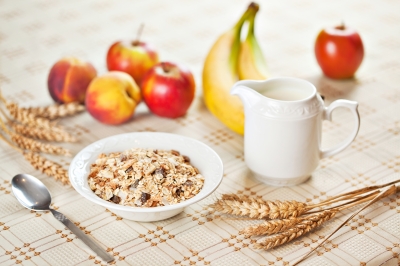4 Reasons Why You Need More Fiber
 How many grams of fiber do you consume daily?
How many grams of fiber do you consume daily?
Most Americans consume half the recommended dietary intake of 25 grams (women) to 38 grams (men) of fiber daily for adults 50 years or younger. Over the age of 50, women should consume 21 grams of fiber and men 30 grams per day.
There are two types of fiber.
Soluble fiber turns to a gel during digestion. Sources of soluble fiber include oats, oatmeal, nuts, seeds, beans, peas, lentils, and some fruits and vegetables (i.e. oranges, apples, carrots).
Insoluble fiber is not digested. It adds bulk to the stool and helps food move through the stomach and intestines. Sources of insoluble fiber include vegetables, whole-grains, and wheat bran.
A diet high in fiber is connected to many health benefits.
- Lower cholesterol levels
Boosting fiber intake from whole-grain products leads to a slower build-up of arterial plaque. Studies also find soluble fiber to protect against atherosclerosis, which is this build-up of plaque in the arterial walls.
Dietary fiber also binds to LDL cholesterol during digestion, resulting in lower LDL cholesterol levels, without decreasing HDL cholesterol levels.
Continue reading
Lower Blood Pressure with Blueberries

There is trial data indicating blueberries help reduce both systolic and diastolic blood pressure.
This double-blind, placebo controlled trial assigned 48 women to receive either 22 grams of freeze-dried blueberry powder or 22 grams of a control powder daily for 8-weeks. Results indicate that blueberry consumption may reduce blood pressure and arterial stiffness.
These improvements may be linked to enhanced nitric oxide mediated vasodilation. Vasodilation refers to the widening of blood vessels, which in turn lowers blood pressure because the heart then exerts less force against arterial walls as it circulates blood.
At the conclusion of the study, participants consuming the blueberry powder daily on average reduced systolic blood pressure 5.1% and diastolic blood pressure was lowered on average 6.3%.
Twenty-two grams of freeze-dried blueberry powder is equal to about 1 cup of fresh blueberries daily.



